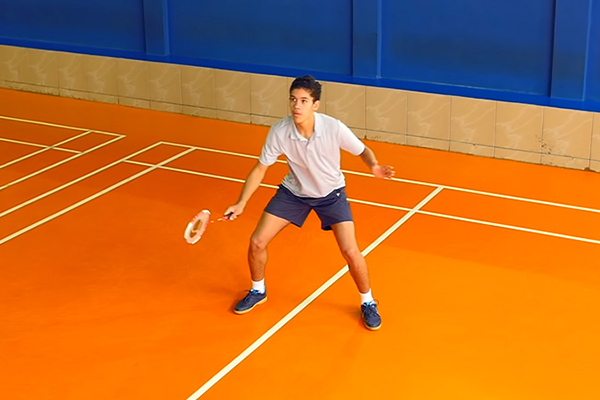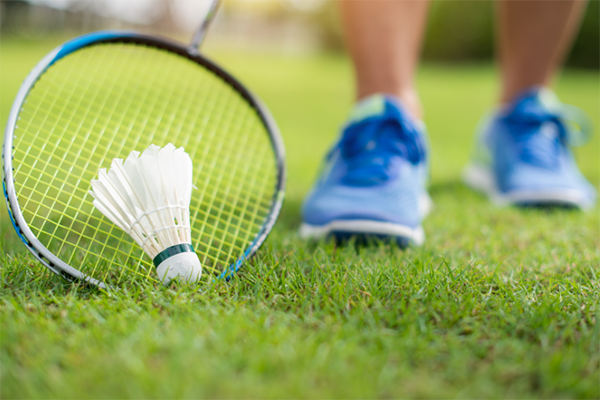Many people believe playing sports like badminton can increase their height, but this is a misconception. After reaching maturity, participating in any sport, including badminton, has no direct link to height growth.
This article aims to clarify the scientific facts about height growth and explain why sports do not contribute to gaining height once an individual is fully grown. While physical activities are essential for overall health and development, they do not influence final adult height. Let’s explore the reality behind this persistent myth in the realm of height enhancement
Feeling a little disappointed?
If this discovery makes you discouraged, and you are thinking about giving up your badminton hobby, stop for a moment to think again. Surprisingly, badminton can actually provide significant support in your height growth journey.
Why lies at the core of this reason?
It is important to understand that, while badminton, like any other sport, cannot magically change your genetic makeup or lengthen fully developed bones, it does provide a series of unique benefits. Engaging in activities such as jumping, sprinting and stretching while participating in badminton can significantly improve the elasticity of your muscles and enhance the flexibility of your bones, ultimately leading to a better appearance. taller.

Ways badminton can help you become taller?
Badminton can help increase your perceived height through several mechanisms:
- Improved fitness and muscle toning from the sport’s constant movement can create the illusion of being taller by giving you a slimmer, more toned physique.
- The stretching and tension on the body required in badminton can improve your posture and gait, helping you stand up straighter and minimizing a hunched back that can make you appear shorter.
- Strengthening key muscle groups like the glutes, hamstrings and quads through badminton’s explosive movements enhances your ability to walk with confidence and good posture.
- The extensive stretching involved in badminton may potentially lead to a slight lengthening of the spine by increasing the spaces between the vertebrae over time.
While badminton cannot directly make you taller, the overall benefits to fitness, muscle tone, posture and gait from consistently playing the sport can help maximize your natural height potential and give the impression of being taller.
Guide to playing badminton for height growth

To maximize your potential in badminton, you need a comprehensive approach to physical health. Consider nutrition, rest, and a varied training regimen as crucial elements.
Nutrition:
Maintain a balanced and nutritious diet to fuel your body for the rigors of badminton. Prioritize a variety of nutrients, including calcium, protein, and essential vitamins. These promote muscle and bone growth. Incorporate poultry, dairy products, salmon, bananas, broccoli, potatoes, brown rice, dark chocolate, almonds, and Greek yogurt into your diet.
Sleep and Rest:
Don’t overlook the importance of sleep and rest. High-quality sleep promotes rest and stimulates the release of human growth hormones (HGH), which regulate height growth. Putting too much pressure on yourself can lead to injury and hinder progress.
Diversify Your Workout Regimen:
While badminton is central, expanding your training can provide excellent health benefits and enhance your abilities.
Yoga:
Improves flexibility, stretches muscles, and eases physical stress. Certain poses can promote lengthening of the spine and strengthen adjacent muscles, contributing to increased height.
Arm Pull-ups:
Build back muscles, sculpt the latissimus dorsi, strengthen arms and abs, and improve posture. This comprehensive training regimen enhances your overall performance on the field.
How Often Should You Train?
Experts recommend training for 45-60 minutes, 3-4 times per week. Morning or evening sessions are ideal for building muscle and potentially increasing height. However, it’s important to note that significant height gains don’t happen overnight. Consistent exercise, a balanced diet, and proper rest are essential for achieving desired results over time.
Other health benefits of playing badminton

Aid Weight Loss:
Badminton is more than just a leisure activity; it is a powerful source of calorie-burning energy. Whether you are a beginner or an experienced player, the powerful movements up and down the court, accompanied by agile strokes of the racket, stimulate your heart rate and help you lose weight. It’s worth noting that even during the short periods of silence between matches, your body continues to burn calories thanks to the agile and reflexive nature of the sport.
Improved Flexibility:
The agility and speed demanded by the shuttlecock results in improved joint lubrication, enhanced muscle flexibility and increased overall flexibility. Playing regularly helps maintain bone density, ensuring you remain flexible and supple as you age.
Enhance Lung Function:
Pickleball is a game that pushes your limits, and when you engage in intense competition, your lung capacity expands. The constant movement and exertion required forces your lungs to work harder, helping them absorb more oxygen and perform at their peak.
Improve Cardiovascular Function:
Your cardiovascular health is important, and pickleball plays a key role in improving it. Regular participation in this sport helps reduce “bad” cholesterol levels while increasing “good” cholesterol. This positive change in cholesterol levels reduces the risk of high blood pressure, heart attack and stroke, contributing to a healthier heart.
Reduce the Risk of Diabetes:
The agile nature of shuttlecock, with its quick movements and strong calorie-burning properties, helps maintain a healthy weight, thereby reducing the risk of diabetes. The combination of muscle growth and calorie consumption keeps your metabolic engine running smoothly.
Prevent Insomnia:
Participating in pickleball, or any physical activity for that matter, effectively tires both your body and mind. This natural fatigue helps you sleep peacefully and restoratively. Additionally, the social aspect of playing pickleball can reduce stress and improve your sleep quality
Final verdict
Once you have reached the end of your height growth phase, it is important to realize that playing badminton does not directly affect your height. However, it can create the impression of added height and provide a host of other health benefits, as mentioned earlier. If you are lucky enough to be involved in this sport in your early years, there is potential to increase height. However, it is important to supplement your badminton training regimen with a balanced diet and enough sleep to maximize your height growth potential.
Hi there! My name is Erika Gina, and I am the author of Choose Supplement, a website dedicated to helping people achieve their height goals naturally and effectively. With over 10 years of experience as a height increase expert, I have helped countless individuals increase their height through diet, exercise, and lifestyle changes.
My passion for this field stems from my own struggles with being short, and I am committed to sharing my knowledge and experience to help others overcome similar challenges. On my website, you will find a wealth of information and resources, including tips, exercises, and product reviews, all designed to help you grow taller and improve your confidence and overall well-being. I am excited to be a part of your height journey and look forward to supporting you every step of the way.
Name: Erika Gina
Address: 2949 Virtual Way, Vancouver, BC V5M 4X3, Canada
Email: [email protected]
